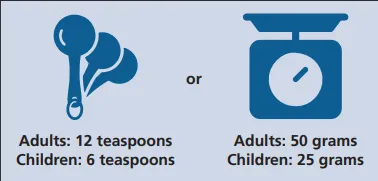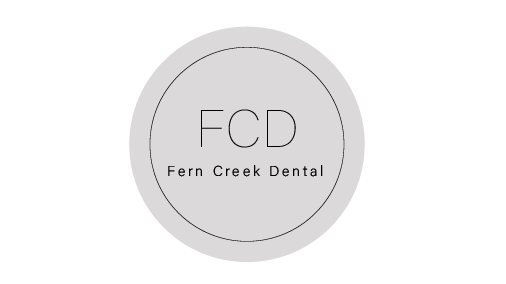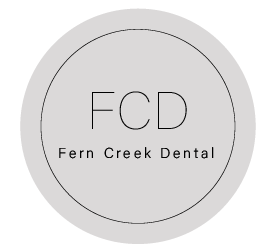Tackling Tooth Pain in Children
Does your child have pain from a toothache or having a tooth removed by the dentist? Your child’s dentist or pediatrician may be able to help you comfort them.
TOOTHACHES
At some time in their childhood, children may develop a toothache. Research suggests that 1 of 4 infants and children up to age 5 years have a toothache at some point. That number jumps to one-half of all children by the time they reach age 6 through 9 years.1 Toothaches can result from infections in the tooth, such as tooth decay, or problems with the gums or other tissues around the tooth. Toothache is different from the tooth pain that occurs when a baby is teething or the tooth pain that occurs when a child has a loose baby tooth.
TOOTH REMOVAL
At some point, children may need to have 1 or more of their teeth removed by a dentist. Parents should be aware that pain after tooth removal is usually not very high to begin with and drops steadily after a few hours.2
USING MEDICINE TO MANAGE PAIN
If your child has a toothache, make an appointment with their dentist or pediatrician as soon as possible. If the dentist or pediatrician cannot see your child quickly, he or she may suggest pain relievers that you can buy at the store to control the pain for a short time until they can see your child. If the pain continues or gets worse, or your child develops facial swelling or fever, contact your child’s dentist or pediatrician again. If your child cannot see a dentist or pediatrician, you can take your child to an urgent care clinic or hospital emergency department. If your child has a tooth removed, their dentist or pediatrician may also suggest using pain relievers.
Some health organizations3-5 suggest that nonsteroidal anti-inflammatory drugs (NSAIDs) and acetaminophen, which can be bought in the store, may help. NSAIDs can be taken alone or with acetaminophen. Do not be confused by these names— they are medical terms. In the store, the pain relievers go by names like Advil (Haleon group), Motrin (McNeil-PPC), or Tylenol (Johnson & Johnson). These medicines come in a number of forms, so it is important to follow your child’s dentist’s or pediatrician’s directions on which pain reliever to use and how to give it to your child.
CONCLUSION
It is not uncommon for infants and young children to experience a toothache. In many cases, this pain can be temporarily managed with pain-relieving medicines that can be bought in stores. If your child is experiencing a toothache, contact their dentist or pediatrician. If the dentist or pediatrician cannot see your child immediately, they may recommend a pain reliever for temporary use and explain how to use it. If your child has a tooth removed, pain-relieving medications may also be recommended by their dentist.
https://doi.org/10.1016/j.adaj.2023.07.004
Prepared by Anita M. Mark, senior scientific content specialist, ADA Science and Research Institute, Chicago, IL.
Disclosure. Ms. Mark did not report any disclosures.
Copyright 2023© American Dental Association. Unlike other portions of JADA, the print and online versions of this page may be reproduced as a handout for patients without reprint permission from ADA Publishing. Any other use, copying, or distribution of this material, whether in printed or electronic form, including the copying and posting of this material on a website, is prohibited without prior written consent of ADA Publishing.
“For the Patient” provides general information on dental treatments. It is designed to prompt discussion between dentist and patient about treatment options and does not substitute for the dentist’s professional assessment based on the individual patient’s needs and desires.
You can find more information for patients at ADAstore.org or at MouthHealthy.org.
1. Santos PS, Barasuol JC, Moccelini BS, et al. Prevalence of toothache and associated factors in children and adolescents: a systematic review and meta-analysis. Clin Oral Investig. 2022;26(2):1105-1119.
2. Akl N, Sommerfield A, Slevin L, et al. Anaesthesia, pain and recovery profiles in children following dental extractions. Anaesth Intensive Care. 2020;48(4):306-313.
3. WHO Guidelines on the Pharmacological Treatment of Persisting Pain in Children With Medical Illnesses. World Health Organization; 2012.
4. American Academy of Pediatric Dentistry. Pain management in infants, children, adolescents, and individuals with special health care needs. In: The Reference Manual of Pediatric Dentistry. American Academy of Pediatric Dentistry; 2021:377-385.
5. Carrasco-Labra A, Polk DE, Urquhart O, et al. Evidence-based clinical practice guideline for the pharmacological management of acute dental pain in children: a report from the American Dental Association Science and Research Institute, the University of Pittsburgh School of Dental Medicine, and the Center for Integrative Global Oral Health at the University of Pennsylvania. JADA. 2023;154(9):814-825.

Figure. Food and beverage labels may list added sugar. The US Department of Agriculture says adults should have no more than the amounts pictured above per day.4 The American Academy of Pediatrics sets the daily limits for children.
your daily diet (Figure). Packaged products have nutrition labels that include information on added sugar to help you choose foods and drinks.
CONCLUSION
Added sugar in a diet can increase the risk of cavities and gum disease. Be sure to check the labels on your foods and drinks to see how much added sugar they contain. Visit MyPlate.gov for tips on a healthy diet.7
https://doi.org/10.1016/j.adaj.2023.03.012
Prepared by Anita M. Mark, senior scientific content specialist, ADA Science and Research Institute, Chicago, IL.
Disclosure. Ms. Mark did not report any disclosures.
Copyright© 2023 American Dental Association. Unlike other portions of JADA, the print and online versions of this page may be reproduced as a handout for patients without reprint permission from ADA Publishing. Any other use, copying, or distribution of this material, whether in printed or electronic form, including the copying and posting of this material on a website, is prohibited without prior written consent of ADA Publishing.
“For the Patient” provides general information on dental treatments. It is designed to prompt discussion between dentist and patient about treatment options and does not substitute for the dentist’s professional assessment based on the individual patient’s needs and desires. You can find more information for patients at ADAstore.org or at MouthHealthy.org.
1. Tungare S, Paranjpe AG. Diet and nutrition to prevent dental problems. In: StatPearls. NCBI Bookshelf version. StatPearls Publishing: 2023. Accessed April 4, 2023. https://pubmed.ncbi.nlm.nih.gov/30480981
2. Gupta M. Sugar substitutes: mechanism, availability, current use and safety concerns—an update. Open Access Maced J Med Sci. 2018;6(10):1888-1894.
3. Martínez Steele E, Baraldi LG, Louzada ML, Moubarac JC, Mozaffarian D, Monteiro CA. Ultra-processed foods and added sugars in the US diet: evidence from a nationally representative cross-sectional study. BMJ Open. 2016;6(3):e009892.
4. US Department of Agriculture, US Department of Health and Human Services. Dietary Guidelines for Americans, 2020-2025. 9th ed. December 2020. Accessed March 21, 2023. https://www.dietaryguidelines.gov/sites/default/files/2020-12/Dietary_Guidelines_ for_Americans_2020-2025.pdf
5. American Academy of Pediatric Dentistry. Policy on dietary recommendations for infants, children, and adolescents. The Reference Manual of Pediatric Dentistry. American Academy of Pediatric Dentistry; 2021:87-89.
6. Korioth T. Added sugar in kids’ diets: how much is too much? American Academy of Pediatrics. March 25, 2019. Accessed April 5, 2023. https://publications.aap.org/aapnews/ news/7331?autologincheck¼redirected 7. Learn how to eat healthy with my plate. US Department of Agriculture. Accessed March 23, 2023. https://www.myplate.gov











